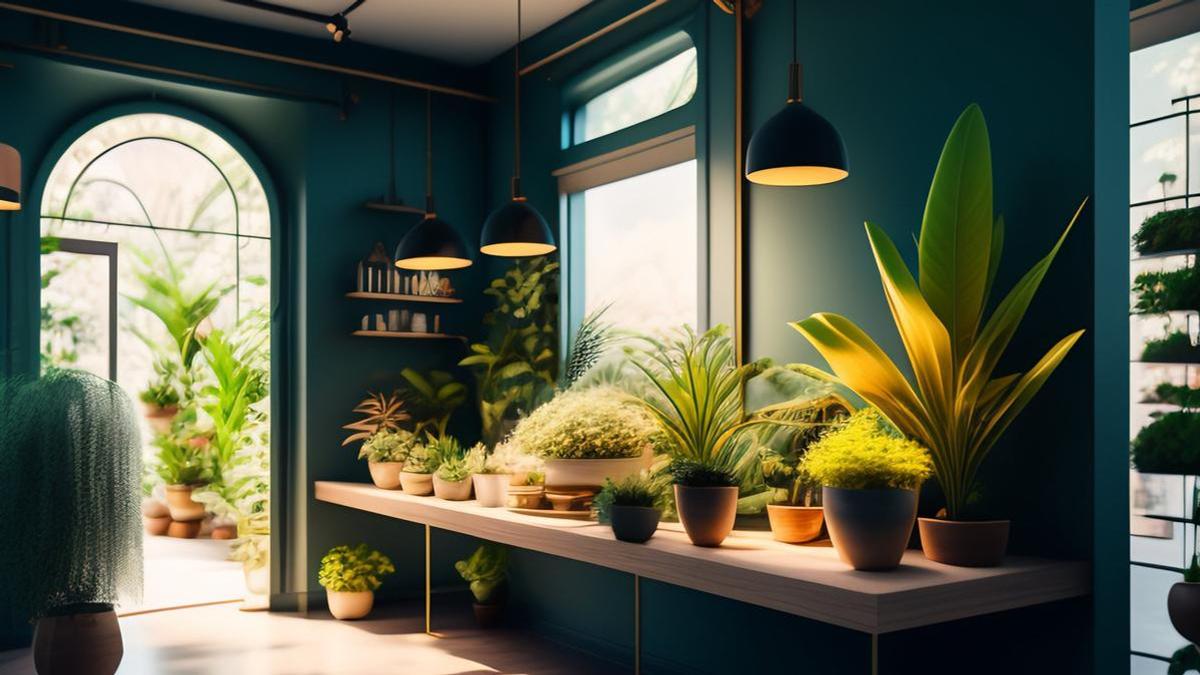
Breathing easy isn’t a luxury it’s a necessity. In a world where indoor air quality continues to deteriorate due to urban living and sealed environments, the fight against allergens is no longer limited to antihistamines and air purifiers. It begins with intelligent design choices that are often overlooked in the initial stages of building or decorating a space. These design choices don’t just shape how our homes look—they determine how we live, breathe, and feel. From material textures to architectural decisions, the future of allergen-free living rests in the creative rethinking of interiors that once unknowingly hosted countless irritants.
In this modern wave of architectural revolution, even the smallest changes can lead to significant health improvements. One such design upgrade, often underestimated, lies in the selection of heating systems. A Cornel Column Radiator doesn’t just offer efficient warmth; it also reduces dust circulation thanks to its easy-to-clean surfaces and vertical design, making it an ideal ally in the war against airborne irritants. Replacing conventional radiators that collect and recirculate allergens is one of the first and most effective steps in creating a home that prioritizes health.
Velvet Doesn’t Love You Back, Neither Does Shag
Textures are seductive. They invite touch, offer visual richness, and often define the ambiance of a room. However, many popular textures—velvet, shag, and high-pile fabrics—are notorious for harboring dust mites, pet dander, pollen, and other allergens. These materials may make your living room Instagram-worthy, but they contribute silently and significantly to respiratory discomfort.
Creating a hypoallergenic environment requires thinking beyond aesthetics. Smooth leather, tightly woven cotton, and microfiber upholstery are far less inviting to allergens. Likewise, window treatments should veer away from heavy drapery and lean into streamlined alternatives like wood blinds or linen panels. These are easy to clean and less likely to trap irritants. But more than anything, this is a shift in mindset—valuing ease of maintenance as an aesthetic in itself.
Floors That Breathe With You, Not Against You
Carpeting has long reigned as the go-to flooring option for comfort, yet it betrays that comfort with a subtle suffocation of cleanliness. Allergens embed themselves into carpet fibers, resisting even the most aggressive vacuuming sessions. For those committed to an allergen-free life, flooring becomes a canvas of opportunity.
Hardwood, cork, bamboo, or even polished concrete presents not only sleekness but a reduction in dust accumulation and improved air quality. These materials offer seamless cleaning and reduce opportunities for mold and mildew to thrive. They don’t trap the past—each footstep is on a surface that invites cleansing and renewal. Think of your flooring not as a passive foundation but as a daily ally in the mission for breathable space.
The Untold Story of Paint and Wall Finishes
Walls speak. Not just through the art we hang or the colors we choose, but through the very materials they’re coated in. Traditional paints may release volatile organic compounds (VOCs) that exacerbate allergies and lead to long-term health issues. The scent of “newly painted” is no longer a symbol of freshness—it’s a warning bell.
Hypoallergenic paints, made from natural or low-VOC materials, do more than provide pigment. They protect. Walls finished in limewash, clay-based paints, or even certain plant-based formulas not only resist mold but also allow walls to breathe, reducing condensation and fungal growth. This small shift in your color palette could mean the difference between sneezing fits and serene evenings.
The Quiet Revolution Inside Your HVAC
We often romanticize the idea of air purification, focusing on stylish diffusers and expensive filters, but forget the beating heart of our home’s ventilation—the HVAC system. When was the last time the ducts were cleaned? How often are filters replaced, and what kind of filters are being used?
An HVAC system customized for allergy sufferers goes beyond high-efficiency particulate air (HEPA) filters. It integrates UV germicidal lights, humidity control features, and zoned systems that reduce the redistribution of airborne particles. Vent placement also matters. Placing them near the ceiling encourages upward air movement and limits the spread of dust at human breathing height. This isn’t just airflow. This is airflow with purpose.
Furniture That Doesn’t Just Sit There
Minimalism isn’t a trend—it’s a health strategy. Heavy furniture with elaborate carvings and crevices might look regal, but it also becomes a sanctuary for allergens. Dusting becomes a chore of precision rather than routine, and the build-up is relentless.
Opt for furniture that is not only stylish but functional in terms of hygiene. Raised legs allow for easy cleaning underneath, smooth surfaces resist accumulation, and simple forms make thorough cleaning efficient. This doesn’t mean a sterile aesthetic. It means intentional design—where every chair, table, or shelf plays a role in maintaining a space of wellness.
Lighting as a Health Catalyst
Natural light isn’t merely a design preference. It is a purifier, a silent disinfectant that reduces mold and bacterial growth in damp, dim corners. Design layouts that emphasize natural light do more than elevate mood—they suppress allergens.
Skylights, large windows, and open-plan layouts help light reach into the depths of your home. And when daylight dims, consider using LED bulbs with minimal UV emission and reduced heat output to avoid dust attraction. Illumination is not just about vision—it’s a partner in cleanliness and vitality.
Plants: Friends or Faux?
Indoor plants are often hailed as natural air purifiers, but they can be a double-edged sword. While some species like snake plants and peace lilies can improve air quality, others may release pollen or contribute to mold growth in damp soil.
Choose hypoallergenic plants thoughtfully, and ensure proper drainage to avoid moldy roots. Better yet, elevate them on stands or wall-mounted holders to minimize the spread of any spores or soil particles. Plants should be companions in clean air, not culprits in disguise.

The Bedroom: Sanctuary or Silent Aggravator?
It’s where we spend the largest portion of our day, yet often the most overlooked in terms of allergen defense. The bed can be a breeding ground for dust mites, especially with down-filled pillows, comforters, and untreated mattresses.
Invest in allergen-proof encasements, opt for washable bedding, and replace old mattresses that may have become allergen time bombs. Humidity should be controlled here more than anywhere else in the home—ideally between 30–50%. This is your healing chamber, your fortress of rest. Treat it as such.
Reimagining Heat for Health
The design of heating systems is undergoing a quiet evolution, shedding the bulky, dust-ridden radiators of the past in favor of smarter solutions. The bold Cornel Column Radiator, for example, presents an elegant alternative that is easy to maintain and resistant to dust accumulation. Its sleek form and functional efficiency align with the growing demand for aesthetic utility—making warmth not just a comfort, but a clean choice. This innovation doesn’t just radiate heat—it radiates intention.
By minimizing the horizontal surfaces where dust tends to settle and optimizing air circulation without aggressive forced-air methods, such radiators subtly yet powerfully improve the respiratory quality of a space. It’s design that heals, not just heats.
Minimal Clutter, Maximum Breathing Room
Clutter is more than an eyesore—it’s an allergen trap. Trinkets, stacks of paper, and excess décor may reflect personality, but they also collect dust and become difficult to clean regularly. The more items you own, the more surfaces you must maintain—and the more places allergens can hide.
This isn’t a call for cold austerity, but for curation. Choose fewer, more meaningful items. Create intentional zones within your home where breathing room is prioritized. Clean lines and visual clarity aren’t merely for magazine spreads—they’re tools of wellness.
Kitchens Aren’t Immune
While most associate allergens with bedrooms and living areas, kitchens can be secret contributors. Moisture from cooking, hidden mold behind cabinets, and even dust on rarely cleaned light fixtures can affect indoor air quality.
Go for cabinetry that’s easy to wipe down and avoid open shelving that collects dust. Install a powerful, quiet range hood that actually vents outside, not just recirculates. Keep bins covered, and reduce cluttered countertops. The kitchen is your laboratory of nourishment—it should feel as clean as the food it prepares.
The Silent Scent of Clean
Fragrance does not equal freshness. Many commercial cleaners and air fresheners contain synthetic fragrances that irritate sensitive respiratory systems. “Clean” should smell like nothing. Or better yet, like fresh air.
Look for cleaning agents with transparent ingredients natural solutions like vinegar, baking soda, and castile soap offer powerful results without the chemical residue. When possible, let your home breathe. Open the windows. Invite in the breeze. Let nature do its part.
Conclusion: A Home That Loves You Back
A hypoallergenic home isn’t sterile. It’s not cold. It’s not lifeless. It’s thoughtful. It responds to the rhythm of your life, supports your well-being, and gives you the freedom to breathe without worry. Design, when done intentionally, becomes a silent partner in health.
From selecting a Cornel Column Radiator that reduces dust circulation to choosing hypoallergenic materials, light-maximizing layouts, and clutter-free zones, every decision becomes part of a larger ecosystem of care. The spaces we live in shape the way we live. And in a world filled with invisible threats, let your home be a visible sanctuary a deliberate, beautiful act of resistance against allergens.